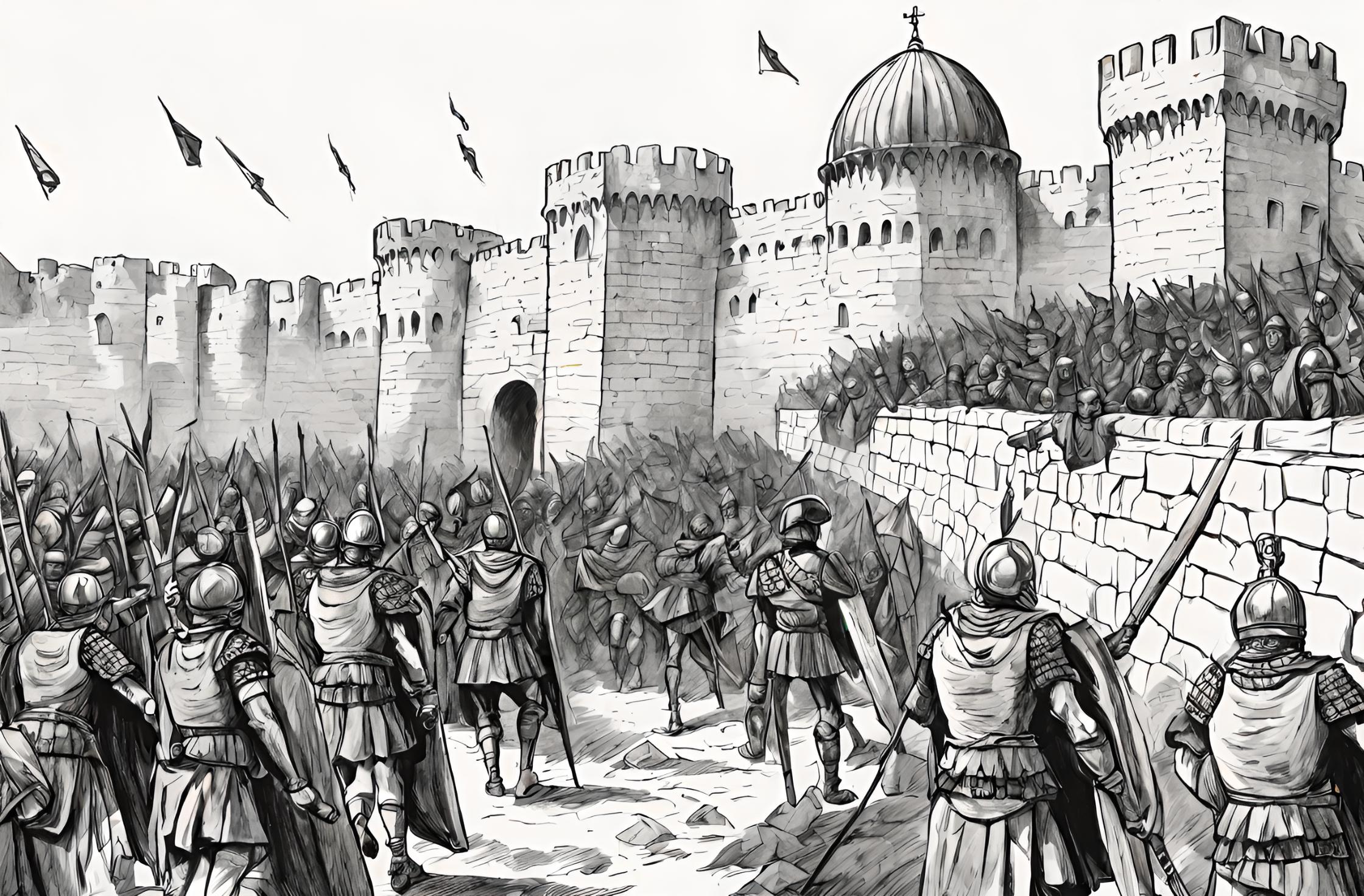Flashback to July 5
World History

On June 5th, 70 CE, a historic event took place in Jerusalem that would forever change the course of history. It was the day when Titus and his Roman legions successfully breached the middle wall of Jerusalem, a significant milestone in the Roman-Jewish War. This article will explore the details of this event and its implications.
The Roman-Jewish War, also known as the Great Jewish Revolt, began in 66 CE when the Jews rebelled against Roman rule in the province of Judea. The war lasted for four years, and during this time, Roman forces, led by commanders like Titus, laid siege to various Jewish strongholds, including Jerusalem.
Titus, who would later become the Roman Emperor, played a pivotal role in the siege of Jerusalem. Under his command, the Roman legions surrounded the city and gradually closed in on its defenses. The middle wall of Jerusalem was a crucial fortification that protected the city from external attacks.
The middle wall, also known as the “Tyrian” or “Second” wall, was built by the Jewish defenders to strengthen the city’s defenses during the war. It was constructed around 41 CE, following the advice of Josephus, a Jewish historian and military leader. The purpose of this wall was to create an additional barrier that would make it harder for the Romans to conquer Jerusalem.
However, the Roman army, known for their military might and advanced siege tactics, was determined to overcome any obstacles in their path. They laid siege to the city’s walls and used various techniques like battering rams, siege towers, and even a massive siege ramp to breach Jerusalem’s defenses.
On June 5th, 70 CE, after a prolonged and intense battle, Titus and his legions managed to break through the middle wall of Jerusalem. This achievement was a significant turning point in the Roman-Jewish War, as it opened the way for the Roman forces to penetrate deeper into the city and bring it under their control.
The fall of the middle wall marked the beginning of the end for Jerusalem. The Romans continued their assault, eventually capturing the city and ransacking the Second Temple, which was one of Judaism’s most sacred sites. The destruction of the Temple symbolized the complete Roman conquest and the end of Jewish autonomy in Judea.
The aftermath of the events on June 5th, 70 CE, had far-reaching consequences. Jerusalem, once a thriving city, was left in ruins. The Jewish population faced immense suffering, and thousands were either killed or taken as captives by the Romans. The Roman victory also had profound implications for the Jewish diaspora, as it led to the dispersal of Jews across different parts of the Roman Empire.
The breach of the middle wall of Jerusalem by Titus and his Roman legions on June 5th, 70 CE, was a significant event in the Roman-Jewish War. It marked a turning point in the conflict and paved the way for the Roman conquest of Jerusalem. The fall of the middle wall had dire consequences for the Jewish population and had a lasting impact on Jewish history and diaspora. This event serves as a reminder of the power and consequences of warfare, highlighting the profound impact it can have on both individuals and societies.
We strive for accuracy. If you see something that doesn't look right, click here to contact us!
Sponsored Content

Dolly the sheep (code-named…
On July 5, 1996,…

A Deutsch discovers asteroid…
On July 5, 1929,…

Walter Gropius, architect (found…
On 7/5/1969, Walter Gropius,…

The coat of arms…
On July 5, 1878,…

Admiral Charles Napier defeats…
On 7/5/1833, Admiral Charles…

Korean War: Task Force…
On July 5, 1950,…

